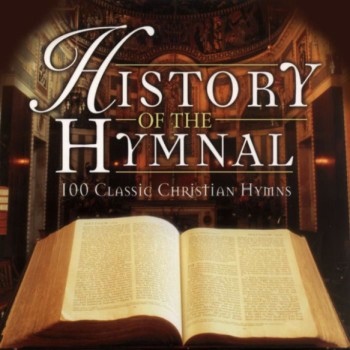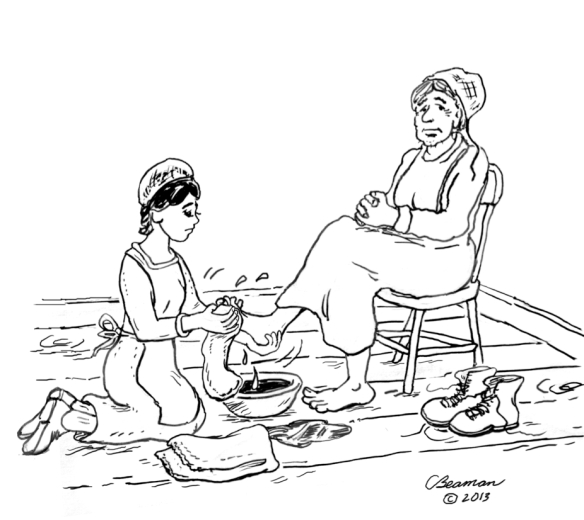CIRCLES:
I am in a small room of our church standing in a circle of women and girls in the presence of our Bishop and Deacons who will ask each of us 2 questions:
* Are you in harmony with the rules and regulations of the Mennonite Church?
* Are you at peace with God and your fellow man?
We are all plain, wearing coverings on our heads and simple dresses with capes, and expected to answer “Yes” to each question and answer them truthfully with a pure heart. I wonder though about Della and Doris in the group. During the last Council Meeting, as this question is called, they each answered “As much as possible” when queried about their willingness to keep church rules. I have noticed that they always push the envelope on fashion, wearing dresses with collars with piping, expensive fabrics, and shoes just a hair below chic. Their answers were acceptable apparently last time, for here they are back again in our close-knit circle.
It is a week or two before Communion at Bossler Mennonite Church, and we assemble in small groups, men and women separately to be examined in preparation for one of our most important ordinances, Communion (Article II, Section 2 of the Lancaster Conference Rules 1968). A memorial to Christ’s suffering and death, church members who have professed faith in Christ, stand in a line to partake of the sacred emblems of Christ’s broken body and shed blood symbolized by a morsel of bread and a sip of grape juice (never wine!) from a communal goblet. We share a common faith and common heritage, many of us branches of the same family tree at Bossler’s Mennonite Church: Garbers, Hesses, Kraybills, Kreiders, Weavers, Wengers, Zimmermans, and of course, Longeneckers.
Our church fathers feel responsible that none of their flock observe Communion unworthily. And we members fear damnation if we have unconfessed sin in our lives. Our pastor intones from the pulpit these words: I Cor. 11:29 “For he that eateth and drinketh unworthily, eateth and drinketh damnation to himself, not discerning the Lord’s body.”
Next Sunday, we sing lovely hymns a capella as we circle row by row around the sanctuary to observe the ordinance of Communion: “Bread of Heaven,” “Alas! And Did My Saviour Bleed?” “Saw Ye My Saviour?” and “When I Survey the Wondrous Cross” are among the oft-sung music selections:
When I Survey the Wondrous Cross
Like the cycles of the seasons, spring and fall, we repeat the circles of Council Meeting and Communion year after year.
TUBS:
After the Communion service in the church, men and women gather separately in their vestibules to observe the Feet Washing Ordinance, Article II, Section 3 of our Conference rules, according to the gospel of John 13:1-9. Our fathers, uncles, and grandpas bring in oblong, galvanized basins of luke-warm water and then quickly disappear.
There is an awkward moment when I look around for a partner. My hope is to find someone else close in age. But a time or two I have been stuck with an older woman – bad breath and chin hairs, really off-putting for a girl of fourteen.
But I’m lucky to pair up this time with Gladys Garber, one of my teen-age friends. We take turns: each tying the terry cloth apron to our waistlines and washing each other’s feet. No scrubbing is involved here, just a gentle hand-pouring of water over one foot and then the other, drying each foot separately, tenderly.
But there’s more. After the foot-washing is finished, It is now time to observe the last ordinance, the Holy Kiss, an “expression of fervent love” (Romans 16:16). And, no, it’s not a peck on the cheek!
It was Socrates who said, “The unexamined life is not worth living.” It is not possible to accuse good Mennonite folk of that transgression. They are a people who share a common heritage, a common faith, and a common goal of a pure and holy life.



I couldn\’t go there, no matter my convictions. My Aunt wanted to be a Nurse and my Great grandfather forbade it because she would have to touch people intimately. I am a nurse, but I couldn\’t kiss feet, no matter how clean I got them. ha!
Even though we washed the feet and kissed the face, sometimes it was still pretty gross. I always look forward to your \”take\” on my posts. Thank you!
The attached devotional I send out daily (23rd) to friends and family, etc. was about the \”Unexamined Life \” I still think we were sisters separated at birth. Too many coincidences.
Years ago I participated in the humble exercise of \’foot washing,\’ however, it was not never taken as far as the kissing stage, thank goodness. Appreciate your BLOG, know it\’s a lot of hard work. You do it exceptionally well. Love you, C
What would I do without my \”wing woman\” always with an encouraging word. I guess the cliche about \”great minds moving in the same channel\” applies here. At least we\’ll say so! As always, merci beaucoup!
LOVE the Communion/Lord\’s Supper exercise of repentance and confirmation of faith. One time, a church where I was a member did not advertise the Lord\’s Supper ahead of time. I didn\’t participate because I had not had my time to specifically ask for unconfessed sins nor reconfirmed. It was a sad time for me but I felt that was the role I needed to take because I was not prepared. LOVE learning the Mennonite way to the same ordinance.
It\’s so nice to hear comments from the other side of the screen, especially from you, Angela. As always, thanks for the feedback. Did you like the ham-loaf?
Comment: Watch out for those chin hairs. I love how you combine pathos and humor in these posts.
I too have affection for those days of self-examination. And I\’m glad I no longer associate communion with fear of damnation.
My favorite turn of phrase was \”hair below chic.\” I think most of my clothing falls into that category due to budgetary concerns trumping fashion rules. Love the post!
I know all about budgets on a teacher\’s salary, but judging from your photos and writing, I dub you a chic chick!